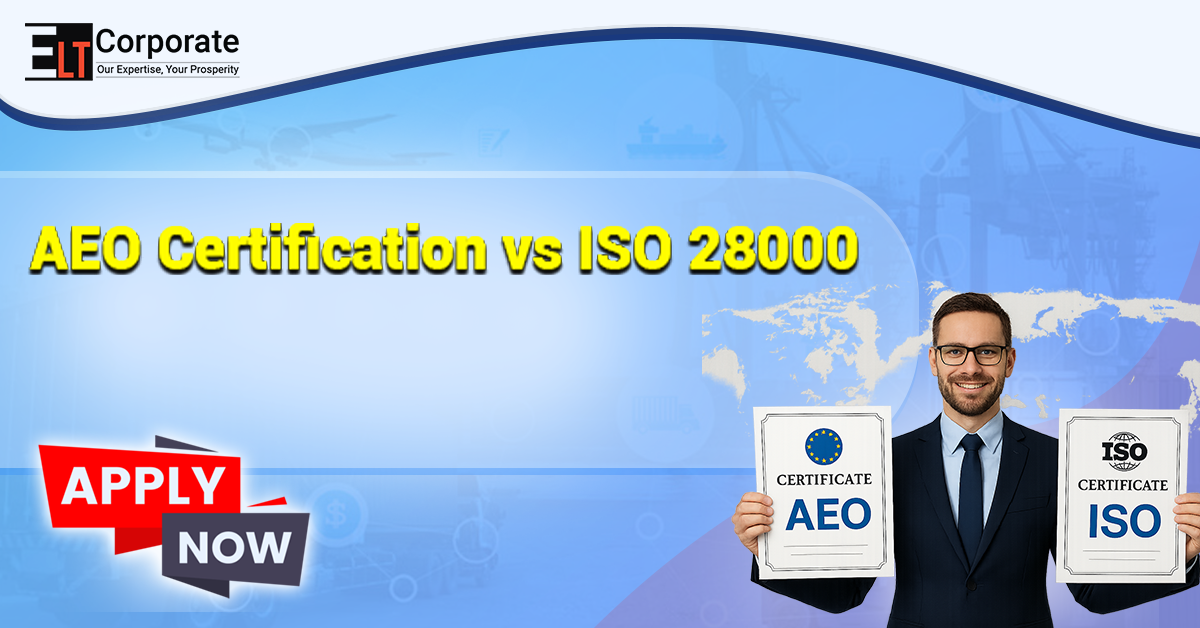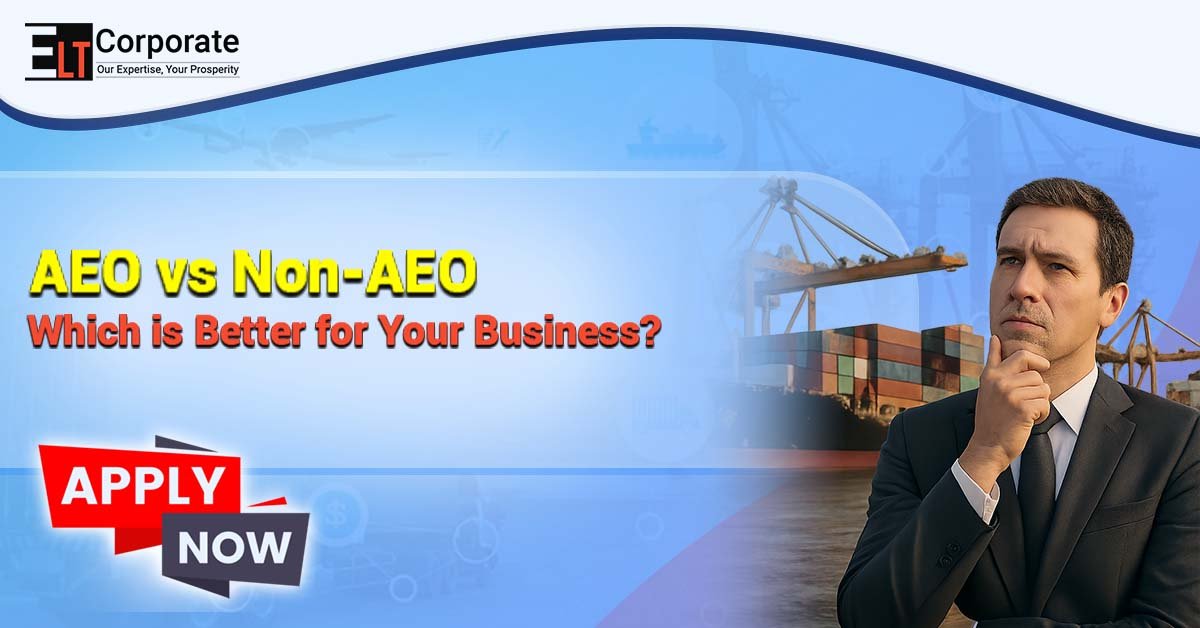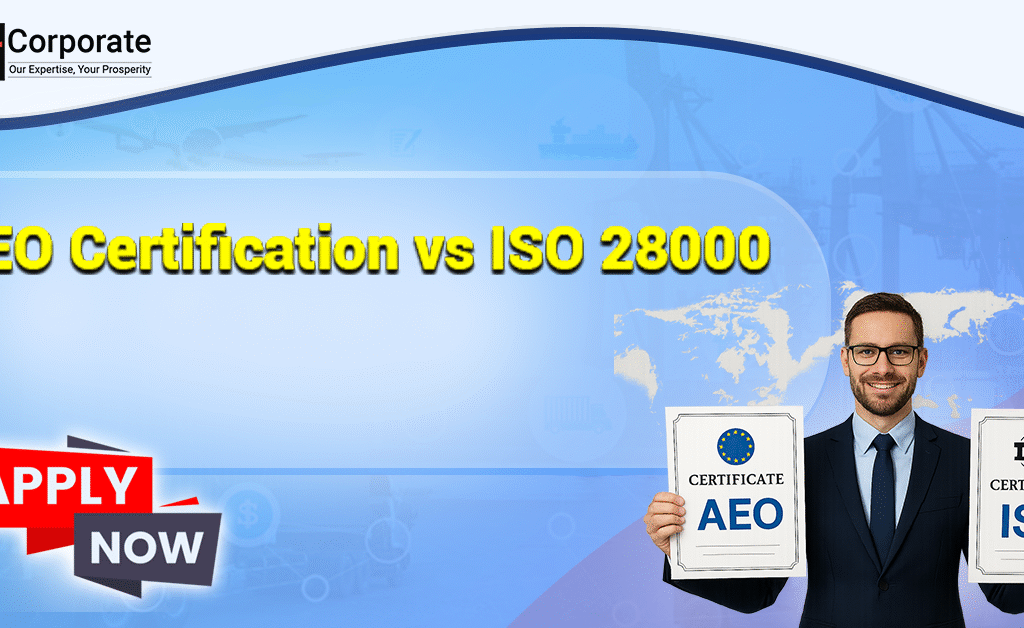Global trade trust depends on trust, compliance, and safe supply chains. The World Customs Organisation (WCO) developed the authorised Economic Operator (AEO) program under a safe structure to identify reliable businesses and simplify customs processes. The Central Board of Indirect Taxes and Customs (CBIC) runs the AEO program in India.
The AEO position indicates that a business is a safe and obedient partner in international trade. But there are different types of AEO certificates – AEO LO, AEO T1, AEO T2, and AEO T3 – and each one comes with its own eligibility criteria, profit and validity.
This article explains the difference between AEO LO, T1, T2 and T3 so that you can identify the right fit for your business.
What Is an AEO Certificate?
An AEO certificate is the official recognition given to importers, exporters and logistics operators that meet strict compliance, security and record standards.
Key benefits of becoming an AEO:
- Reduced documentary and physical checks at customs
- Faster clearance and priority processing
- Deferred payment of duty (from T2 onwards)
- Faster duty drawback and refunds
- International recognition under Mutual Recognition Agreements (MRAs)
Categories of AEO in India
The AEO programme in India is divided into two broad groups:
-
AEO for Importers and Exporters
-
AEO-LO for Logistics Operators
- Includes Customs Brokers, Custodians, Warehouse Operators, Terminal Operators, Freight Forwarders, Airlines, Couriers, and Shipping Lines.
AEO LO vs AEO T1 vs AEO T2 vs AEO T3 – Comparison Table
| Feature | AEO LO | AEO T1 | AEO T2 | AEO T3 |
| Who Can Apply | Logistics operators: CHA, custodians, warehouse operators, terminal operators, freight forwarders, airlines, couriers, shipping lines | Importers & exporters with at least 3 years of business activity (MSME relaxations possible) | Importers & exporters with stronger compliance and internal controls | Importers & exporters with the highest compliance record and global trade operations |
| Validation | On-site security & facility checks | Desk-based document review | On-site validation by customs officers | Extensive onsite audit and verification |
| Scope | Recognises secure logistics operators | Entry-level status for trade facilitation | Advanced facilitation with financial benefits | Maximum facilitation, strongest partnership with customs |
| Benefits | Priority cargo handling, reduced checks, faster clearance | Reduced checks, priority at ports, faster processing | All T1 benefits + deferred duty, quicker drawback/refunds, fewer inspections | All T1 & T2 benefits + maximum facilitation, international recognition via MRAs |
| Validity | 5 years | 3 years | 3 years | 5 years |
| Upgrade Path | Not applicable | Can upgrade to T2 | Can upgrade to T3 | Final tier (highest recognition) |
AEO LO (Logistics Operator)
Who it’s for:
- Customs Brokers
- Freight Forwarders
- Custodians
- Terminal Operators
- Warehouse Operators
- Airlines, Couriers, and Shipping Lines
Features:
- Focuses on supply chain and cargo security standards.
- Ensures safe custody and handling of goods in transit and storage.
Validity: 5 years
Benefits:
- Faster clearance and reduced customs checks
- Recognition as a secure logistics partner
- Priority handling of cargo
AEO T1 (Entry-Level for Importers/Exporters)
Who it’s for:
- Importers and exporters with a minimum of 3 years of business activity (with relaxations available for MSMEs under CBIC circulars).
Features:
- Simplest entry into the AEO programme.
- Primarily desk-based validation by customs.
Validity: 3 years
Benefits:
- Reduced documentary checks
- Faster clearances at ports
- Priority treatment for consignments
AEO T2 (Intermediate Tier)
Who it’s for:
- Importers and exporters with a clean compliance record and robust internal systems.
Features:
- Requires detailed documentation.
- Customs conducts onsite validation of facilities and controls.
Validity: 3 years
Benefits:
- All T1 benefits
- Deferred payment of duties (starts from T2 onwards)
- Faster processing of duty drawback and refunds
- Fewer import/export inspections
AEO T3 (Highest Tier)
Who it’s for:
- Large importers/exporters with excellent compliance history and advanced systems.
Features:
- Extensive validation and audits by customs.
- Strongest partnership level between the company and customs.
Validity: 5 years
Benefits:
- All T1 and T2 benefits
- Maximum trade facilitation
- Recognition under Mutual Recognition Agreements (MRAs) with foreign customs authorities
- Enhanced credibility in global supply chains
Which AEO Certificate Should You Choose?
- AEO-LO: For logistics operators like CHA, custodians, freight forwarders, airlines, and shipping lines.
- AEO-T1: Best for importers/exporters starting their compliance journey.
- AEO-T2: Ideal for businesses with strong controls that want deferred duty and faster refunds.
- AEO-T3: Suitable for large enterprises engaged in global trade, seeking maximum facilitation and international recognition.
Application Process (Simplified)
- Register on the AEO India portal.
- Submit the application form with supporting documents.
- Customs reviews the application:
- T1: Desk-based check.
- T2/T3/LO: Onsite validation.
- Certificate issued with 3- or 5-year validity.
- Renewal: Mandatory for T2/T3/LO; auto-renewal facility available for T1 (subject to conditions).
Conclusion
The AEO programme provides significant advantages for businesses in international trade. Choosing between AEO LO, T1, T2, or T3 depends on your role in the supply chain, compliance history, and scale of operations.





